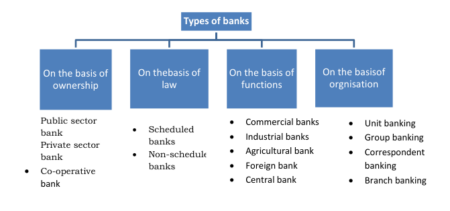Table of Contents
What is Supply Chain Management?
Supply Chain Management is a process ensuring a smooth flow of goods and information along the chain from the supplier/producers’ end to the customers’ end. The process is an integrated whole of various business functions including customer orders, distribution, logistics, and delivery of goods, alongside the flow of information pertaining to the sales data, orders received, replenishment data, etc.
The process closely monitors the information flow at various stages of the process. To be specific Supply Chain Management can be defined as: “An integrated whole of processes that integrates components of producers/suppliers, manufacturers, distributors, transporters, etc. to ensure smooth flow of goods and services at the customers’ end at the expense of minimum resources and in desired time, quantity and locations”.
What is Supply Chain?
Supply chain refers to the entire chain of activities of goods or services from manufacturing to delivery at the customers’ end. It involves resource optimization with the service level. Value Chain in contrast pertains to each stage/component within the supply chain.
According to Michael Porter, the value chain receives materials/semi-finished goods to add value through different processes to provide a value-added product to its customers. Competitiveness to a firm is obtained through the cost-effective delivery of goods and services.
Any industry has a set of primary activities (inbound logistics, operations, outbound logistics, sales, and service) and support activities(procurement, technology, firm infrastructure, and human resource management). Of all the activities a firm is generally efficient in performing a few of the activities more effectively and efficiently than its competitors.
Supply Chain Drivers
We are going to discuss the factors that facilitate the growth and development of supply chain management. Let’s look at the supply chain drivers:
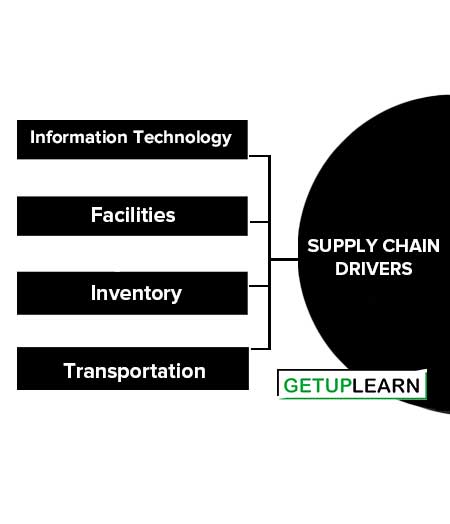
Information Technology
The growth of information technology has been a key driver of supply chain management. IT has enabled real-time access to sales data, location tracking of goods, fluctuations in customer demand data, order tracking, etc. This has been the feeder to managing manufacturing, streaming logistics, planning sales, etc.
Transparency along the chain has been attained with the usage of IT along the linkages of the chain. Enterprise Resource Planning (ERP) and Radio Frequency Identification (RFID) technology have been instrumental in close coordination among the partners within a chain and visibility of data across the partners.
With the adoption of IoT(internet of things) enhanced automation is made possible by virtue of which firms can be more responsive to changes in customers’ demands, sudden variations in the logistics, optimization of shipments, etc. Walmart’s competitive advantage lies in its usage of information technology for connectivity among the stores, maintenance of a centralized database, and automated replenishment system.
Facilities
Facilities pertain to the location where products are manufactured, assembled, and stored. The locations of these facilities, capacity, and flexibility of manufacturing have a significant impact on the supply chain.
The decision may be of locating the assembling facilities nearby a centralized location or it could beat the level of customers to provide ease of handling, and transportation and reduce cost.
Inventory
Raw materials, work in progress, and finished goods constitute inventory within a supply chain. The lower the inventory maintained, the more efficient the supply chain. Maintaining high levels of inventory involves risks of damages and obsolescence, in addition to high inventory costs.
In the dynamic market of the present day, firms need to be responsive to customers’ changes in taste and preferences and hence must be responsive to such changes. In view of the rapid technological advancements, the technological lives of products have been cut down drastically. This has compelled firms to maintain minimal or no inventory of raw materials, work in progress, and finished goods.
For example, Dell has successfully practiced the principle of maintaining minimal inventory. Any production in Dell is triggered by a customer order. Principles of lean manufacturing and Just in Time (JIT) have been instrumental in reducing inventory costs in a chain by reducing waste and reducing inventory along the chain. Mahindra & Mahindra has been implementing JIT successfully.
Transportation
The physical movement of raw materials, work in progress and finished goods is facilitated by transportation. An efficient mode of transportation can serve customers with minimal time. The transportation strategy used can optimize the chain or add to its costs.
The hub and spoke model used in courier services facilitates easy and efficient transportation of parcels and simplifies the process. The mode of transportation has enabled growth in the online retail industry largely.
Types of Supply Chain
The types of supply chains can be classified into four major categories:
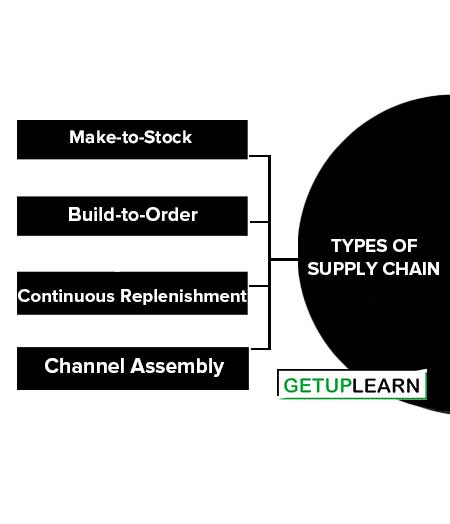
Make-to-Stock
Make–to–stock type chains rely on forecast data to stock products at the end of the chain. Accurate forecasts enable firms to eliminate risks of stock out and facilitate product availability on the shelf. FMCG products and apparels fall into the make-to-stock category of supply chains normally.
The ability of the firms to predict fashion trends enables them to lead the market by making predicted apparel available on the shelf much ahead of the competitors, thereby driving the trends of fashion.
Build-to-Order
The type builds or assembles products based on the specifications of the customer’s demands. The type uses customer order data to produce a customized product. Assemblies and sub-assemblies at the distributor or manufacturer level are standardized and robust to accommodate variations in customers’ demands.
The type is analogous to mass customization. Dell until recently has been using this type for its PCs.The type is advantageous to make-to-stock in that it reduces finished goods inventory, eliminates risks of obsolescence, and provides customized customer demands.
Continuous Replenishment
The type continuously monitors sales patterns to replenish sold inventories. The success of this type lies in close coordination among the partners and a transparent flow of information across the chain. The type maintains no inventories and provides a high service level.
Though costly in terms of multiple shipments required yet firms like IBM have been using Automated Vehicle Load Building causing reduced transportation costs.
Channel Assembly
This type of supply chain is a modification of the build-to-order type in that assembly of the product is done as the assemblies move along the chain.
Generally practiced in multi-locational sourcing of components and assemblies, the type is popular with the computer technology industry. Third-party logistics providers are instrumental in the assembly of the products on the go. Micro Ingram has been using this type of supply chain.
Challenges of Supply Chain Management
Supply chains across industries are diverse in operation and functions, the type of products handled, and customer demands. This presents complexity in providing a single prescription to the problems rampant in each sector and industry. The diversity in the type of products determines the nature of storage requirements, transportation specifications, etc.
Challenges in a supply chain in the food sector are cold chain requirements in transportation and storage, adequate infrastructure for delivery and marketability of farm fresh products, packaging and conformance to quality specifications, and delivery of products in desirable form.
Food products have short shelf life necessitating the usage of faster modes of transportation but for the higher costs of such modes, the industry lands up in huge loss of decay of the products. The retail supply chain faces challenges of managing Omnichannel, managing inventory across multiple locations, managing workforce, etc.
Inventory needs to be sensitive to customer demand and preferences to avoid stock-outs and loss of brand preferences. The availability of multiple channel delivery for products of a brand has proved costly for multi-brand outlets. Customers are prompted to procure products through channels that are more responsive to returns, alterations, and replacements.
The success of online retailing has been owing to the responsiveness of the channel. Customer preference is more a fad or trend sensitive in the retail industry. The other complexity in retail is the reverse supply chain for out-of-date products. Success in retailing can be attributed to trend responsiveness, multiple channel integration, and low inventory maintenance, integration among the partners as in the case of retailers like Walmart, Future Group, etc.
The challenges of supply chain management are explained below:
- Globalized business
- Growing Customer Expectations
- Changes in Policies
- Availability of Partners
- Scarcity of Talent Pool
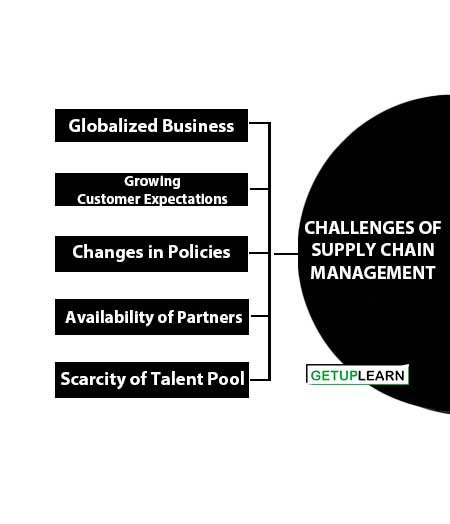
Globalized business
business across countries has brought in risks of lead time delays caused by factors specific to regions that often elongate the lead time. This at times causes damage in products and obsolescence.
Growing Customer Expectations
The easy availability of variety across the globe has made competition stiffer. Expectations of customers in terms of product variety, quality, and standards have grown diverse leading to pressure on the firms to satisfy the diverse growing demands.
The fast-changing customer base has evolved a number of segments of varied types. Each segment has a diverse set of preferences, interests, and demands. This has necessitated multiple numbers of products for the different segments. The concept of one size fits all is no more possible.
Changes in Policies
countries across the globe have diversity in policies of business causing it imperative for firms to follow a variety of guidelines in a variety of regions. Accommodating such changes is a hurdle in business.
Availability of Partners
Countries like India have had an unorganized logistics sector until very recent days. Earlier, firms had to partner with a variety of diverse logistics vendors of varied types, adding complexity to the already complex supply chain.
Scarcity of Talent Pool
Some businesses require specific expertise as in the case of electronic manufacturing, hospitality industry, etc. The unavailability of trained and qualified manpower in the regions leads to the sourcing of manpower from other regions raising the cost.
How to Overcome Supply Chain Challenges?
These are the point of overcome supply chain challenges:
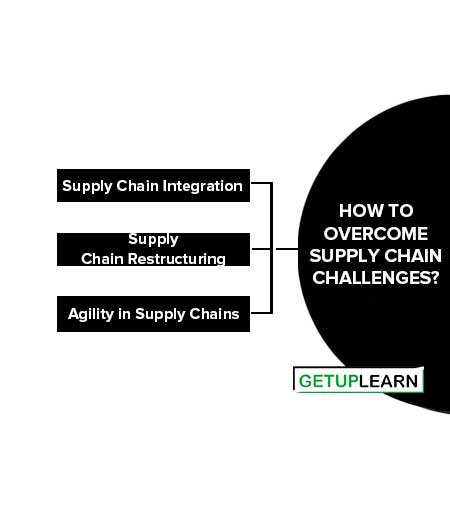
Supply Chain Integration
In the era of demand variations of customers and the variety in tastes and preferences of customers, it is necessary to be accurately responsive to the varied demands. Any variation in responding to customer demands could be a costly affair.
As a result, it is necessary that the customer requirement information is transparently shared within the chain with no variation at all. Additionally to this, material flow is also shared with no variation in the chain. This is possible by a close integration among the partners of the chain. This reduces channel inventories in the chain.
Integration can be both internal and external. Internal integration works to smooth out information variations within departments. ERP systems in organizations have proved to have handled the flow of information and facilitated the flow of resources across departments.
External integration facilitates the accurate translation of demand data into order replenishment without variations. In spite of the transparent flow of demands, there are possibilities of variations across the chain.
For example, Such distortions occur due to conflicts arising from suppliers serving multiple industries and suppliers competing with the end products as Cannon which supplies printer heads to HP also competes with HP printers. These distortions can be handled through Vendor Managed Inventory (VMI). VMI has been explained in detail in earlier units.
Supply Chain Restructuring
Supply chain restructuring involves reengineering the chain to handle inefficiencies in the chain. Most significant restructuring strategies include realigning the point of differentiation of products and the customer order point. Realigning the differentiation point helps in postponing differentiation in the products.
This enables handling minimum variety across the chain which is easier for warehousing, and logistics, rules out risks of obsolescence, etc. Shades of paint are not pre-mixed but are prepared on the retailer’s end as per the specifications of customers.
This postpones handling variety and provides a customized product to each customer. Bicycles are assembled on the retailer’s end and transported in assemblies to reduce transportation costs and respond to varied customer demands.
Agility in Supply Chains
An agile supply chain is one which is responsive to variations in customer demands. An agile chain uses strategies of postponement as detailed above and follows the elimination of wastes within the chain.
It is responsive to the variations of volume and variety arising out of the seasonality of demand and promotional campaigns. Mass customization and standardization in components and assemblies are enablers of agility in a chain.
FAQs About the Supply Chain Management
What are the challenges of supply chain management?
The challenges of supply chain management are: 1. Globalized business 2. Growing Customer Expectations 3. Changes in Policies 4. Availability of Partners 5. Scarcity of Talent Pool.

